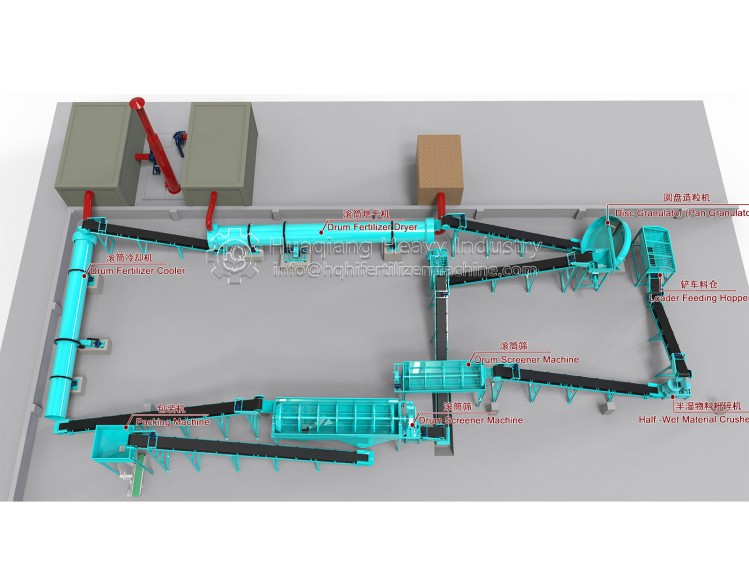NPK production line can process different chemical fertilizers to obtain agricultural special crop compound fertilizer. NPK fertilizer granulation process can be generally divided into: raw material batching, NPK fertilizer mixing, compound fertilizer granulation, particle drying, particle cooling, particle grading, finished product coating and final product packaging.

Processing technology of NPK production line
1. Raw material ingredients: urea, ammonium nitrate, ammonium chloride, ammonium sulfate, ammonium phosphate (monoammonium phosphate, diammonium phosphate, heavy calcium, superphosphate), potassium chloride (potassium sulfate) and other raw materials are prepared according to a certain proportion (according to the market demand and soil test results in different regions).
2. Raw material mixing: mix the prepared raw materials evenly to improve the overall uniform fertilizer efficiency content of fertilizer particles.
4. Particle drying: the granules made by the granulator are sent to the dryer, and the dryer dries the moisture contained in the granules, so as to increase the strength of the granules and facilitate their preservation.
5. Particle cooling: the temperature of the dried fertilizer particles is too high, and it is easy to agglomerate, so it needs a cooler to quickly cool the particles. The cooled fertilizer is easy to be bagged, stored and transported.
6. Particle classification: the cooled particles are graded, and the unqualified particles are crushed and re granulated. The qualified products are screened out and sent to the next processing technology.
7. Finished film: the qualified products are coated to increase the brightness and roundness of the particles.
8. Packaging of finished products: the coated particles, that is, finished products are bagged and stored in a ventilated place.




